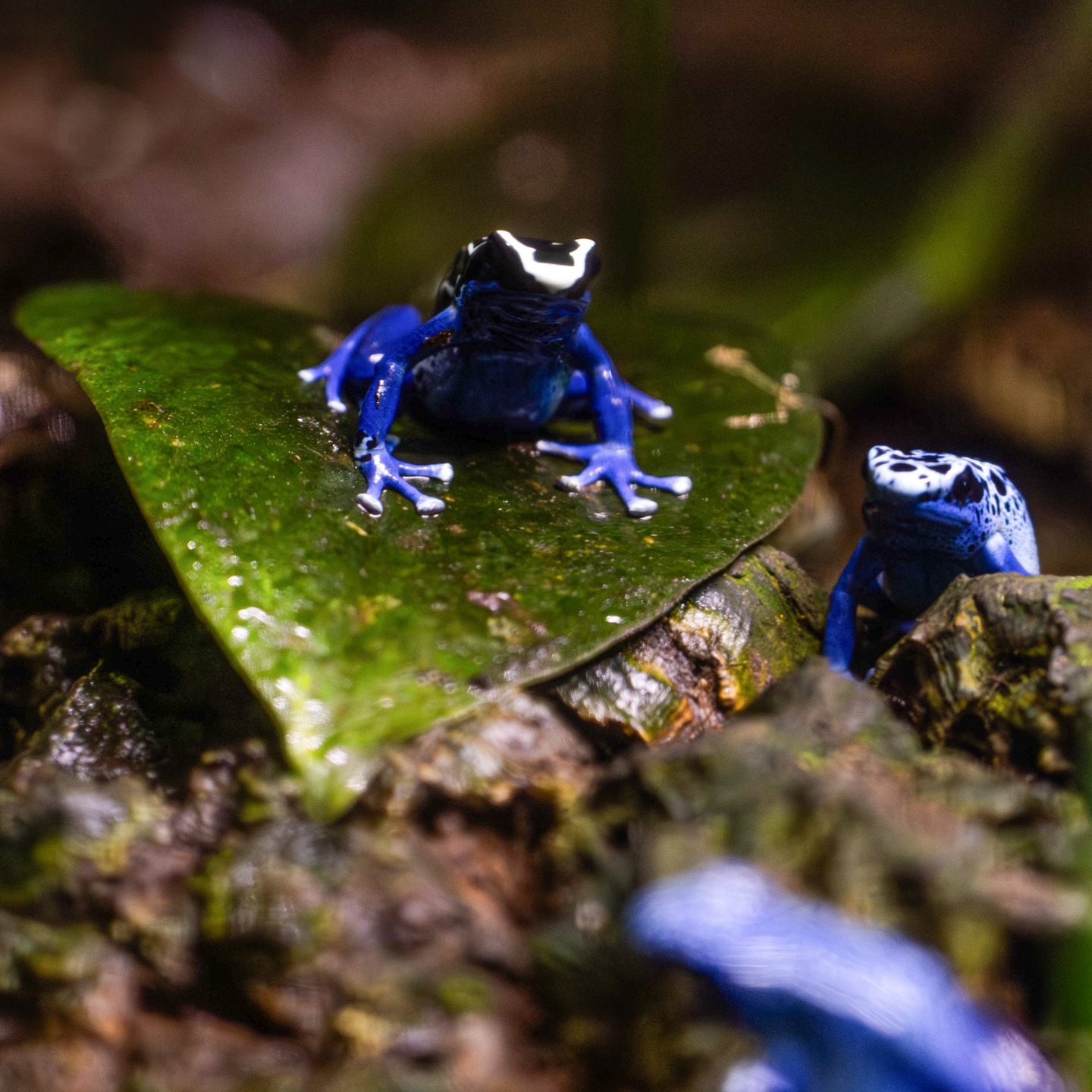- Overview of Poison Dart Frogs’ Habitat and Behavior
- Importance of Poison Dart Frogs in Ecosystems
- Conservation Status and Efforts to Protect Poison Dart Frogs
- Role of Zoos in Poison Dart Frog Conservation
- Educational Programs and Public Engagement in Conservation Efforts
Poison dart frogs are an intriguing group of amphibians known for their vibrant colors and potent toxins. These characteristics have evolved over time to aid in their survival. The habitat of poison dart frogs plays a crucial role in their behavior and survival. Predominantly residing in the tropical rainforests of Central and South America, these frogs rely on the humid and warm environment. The dense foliage and numerous water bodies in their habitat provide the perfect setting for their diverse activities. It is key for conservation efforts to maintain these environments so the frogs can thrive. Understanding how these frogs interact with their surroundings offers insight into their daily lives. Their presence in the ecosystem facilitates numerous ecological functions, highlighting their importance beyond their physical beauty.
The ecological role of poison dart frogs is significant, particularly in terms of pest control. Their diet mainly consists of insects, which assists in maintaining a balance in the ecosystem’s food web. Moreover, the presence of poison dart frogs serves as an indicator of environmental health, providing researchers with data on ecosystem changes. By regulating insect populations, these tiny amphibians contribute to healthy vegetation growth, illustrating their ecological importance. Their vibrant colors, a classic example of aposematism, warn potential predators of their toxicity, preventing unnecessary attacks and ensuring their survival. This relationship exemplifies the balance that has evolved in their natural habitats, emphasizing the frogs’ role in maintaining ecological stability.
The survival of poison dart frogs is threatened by several factors, predominantly habitat destruction and climate change. Deforestation and agricultural expansion have resulted in significant loss of their natural habitats. The decrease in humidity and disruption of their living environments pose substantial threats to these frogs. Moreover, illegal pet trade markets have also contributed to the decline in their populations. Despite these challenges, conservationists are actively working towards preserving these species. Protection of habitat, regulation against illegal trade, and captive breeding programs in zoos form the core of these conservation efforts. Data collection and research initiatives further support these activities, fostering better conservation strategies.
Zoos play a vital role in the conservation of poison dart frogs, offering a controlled environment that supports their survival. These institutions provide refuge for species at risk and enable breeding programs aimed at bolstering population numbers. Scientific studies undertaken in zoos contribute valuable knowledge about these amphibians, aiding conservationists in the field. Through habitat simulation and careful management, zoos help preserve the genetic diversity of poison dart frogs, which is critical for their long-term survival. Furthermore, zoos participating in global networks can share invaluable research and resources, amplifying the efforts to protect these amphibians across the globe.
Public engagement and education are equally important in achieving long-term conservation success. Zoos and educational institutions can foster an appreciation for amphibians and promote awareness about the threats facing poison dart frogs. Interactive exhibits, educational materials, and programs involving the public help cultivate an understanding of the amphibians’ ecological roles. By highlighting the intrinsic value of these creatures, these initiatives can inspire a commitment to conservation. Encouraging everyday actions that protect habitats worldwide can lead to substantial outcomes for not only poison dart frogs but many other species as well. Through education, the message of conservation can be extended, ensuring that future generations can appreciate the dazzling beauty and ecological importance of poison dart frogs.
*****
Source Description
The only PDF we want to see at the end of a long week: 🐸
Our poison dart frogs wish you a happy and hope you have a “ribbiting” weekend!
Alt-text: Little blue poison dart frogs congregate in the damp foliage of their habitat at the Zoo.


